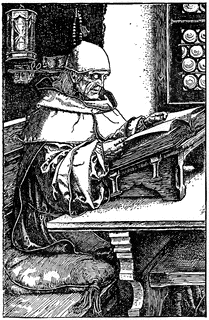In a recent comment on this blog site, a person asked about possible connections of Tapscotts to Devon in England. In fact, Devon and adjacent Somerset are almost certainly origins of the Tapscott family, both descendants who remained in England and descendants of those who migrated. Contact me if sources are needed for what follows.
The earliest references to Tapscotts are found in R. D.
Blackmore’s Lorna Doone country—where Somersetshire met Devonshire and where the “Royal Forest of Exmoor” tied the two shires together. We first find
the name in sixteenth-century records from the Somerset parishes of “Stokepirowe”
(today, Stoke Pero—Tamseine Tappescotte, 1582), “Selworthie”
(Selworthy—Elsabeth Tapiscott, 1559; Willyam Tapescott, 1577), “Porlocke” (Porlock—Welthian Tapscott, 1592; Christofer Tapscott, 1592), and Stogumber (John Tappscott, 1588), and from the Devon
parishes of “Northmolten” (North Molten—Thomas
Tapiscott, 1560)11
and St. Andrew’s, Plymouth (Thomas Topesckott, 1588; Richard Tapskott, 1589). And we find a
complete absence of the name in other shires until the middle 1600s, when the
family began its slow diaspora, first to the nearby towns and villages of
Minehead, Ilminster,
High Ham, and Bridgwater in Somerset and Exeter and Culmstock in Devon then to the cities of London, Bristol, and Portsmouth; and finally to Wales, Manchester, and Birmingham.
With the exception of Plymouth , the towns with sixteenth-century Tapscotts form a triangle connecting Stogumber, North Molten, and, when grouped, Porlock, Selworthy, and Stoke Pero. The longest side, between North Molten and Stogumber, is only 22 miles, a long day’s ride by horseback, even over poor roads, and perhaps two or three days by foot. Plymouth , fifty miles as the crow flies from North Molten, is more distant.
The oldest Tapscott record found to date is the 1541 will of John
Tapiscott from “Stokepirowe” (Stoke Pero),
the site of a lonely, secluded church in the heart of Exmoor .
Culbone, Oare, and
Stoke Pero
Parishes three, no
parson’ll go to
Culbone, Oare, and Stoke Pero
Three such places you’ll
seldom hear O’
Old Exmoor Doggerel
Like the majority of seventeenth-century English, most early
Tapscotts were poor, owning no land and hiring out at wages as low as 1½ pence
a day. If tenant farmers, they owed the lord of the manor such services as
plowing and harrowing, threshing, winnowing and hauling, hoeing, reaping, and
mowing, and making winter hedges, being allowed in return to collect a sheaf of
grass for their personal use. According to the 1664-1665 Hearth Tax for Somerset, Henry and John
Tapscott of Selworthy and Wm. Tapscott of
Blackford had not a single fireplace in their houses (which
they almost certainly did not own) and were “not rated [not taxed] to Church
nor poore by reason of theire porvertie.” In the 1674 Devon Hearth Tax Return,
John Tapscott of Chawleigh is listed among the paupers. In 1705 the
Overseer of the Poor at the Parish of Luccombe recorded in his accounts
charges concerning Elizabeth Tapscott the maid
that was drowned in Horner water this year 1705. Received for her clothes 8s.,
disbursements as followeth, Paid ye coroners fees 13s. 6d., Paid William Eam for riding for ye coroner 8s. 6d., paid men
for watching by her 12s., paid for a shroud for her 4s. 2d., paid for
stretching her forth and making affidavit 2s., paid for carrying ye bear 1s.,
for making ye grave and ringing ye bell 2s.
After Elizabeth ’s clothes were
sold, her death cost the parish £1 14s 2d. She was buried 17 December 1705.
In the eighteenth century, Mary Tapscott was
supported for years at Selworthy Parish Church of All Saints with shoes, a shift, “payment to persons in
distress,” and “money given to the poor in time of hard frost.” In 1798 Betty
Tapscot was listed as a pauper when she was buried at
Selworthy. Few if any early Tapscotts would have been called “gentleman,” a
title requiring the possession of freehold land renting for forty shillings a
year and the right to bear arms. When Tapscotts died most would have been
wrapped in a woolen shroud and relegated to an unmarked grave. Occasionally a
Tapscott, e.g. John, a churchwarden at Winsford Parish in 1641/1642, appears in
a higher station, but reports of Tapscotts in Tudor and Stuart England with money, prestige, or good positions are
almost nonexistent.
Later on British Tapscotts rose in the world. In the Devon
village of Culmstock from 1850 to 1857, John Tapscott was the
host of the Ilminster Inn, in 1857 Henry Tapscott was a shopkeeper, and in 1850 Richard Tapscott was designated
a “gentleman.” In Liverpool, the brothers William and James
Tapscott, who operated a line of ships carrying Mormon immigrants to the United
States in the nineteenth century, were certainly Tapscotts of means. Striking markers and monuments in Minehead’s
St. Michael’s Parish Church show that at least some eighteenth- and nineteenth-century
Tapscotts in and around Minehead had respectable incomes, perhaps from shipping
profits of Liverpool’s Tapscott brothers, to whom they were related.

